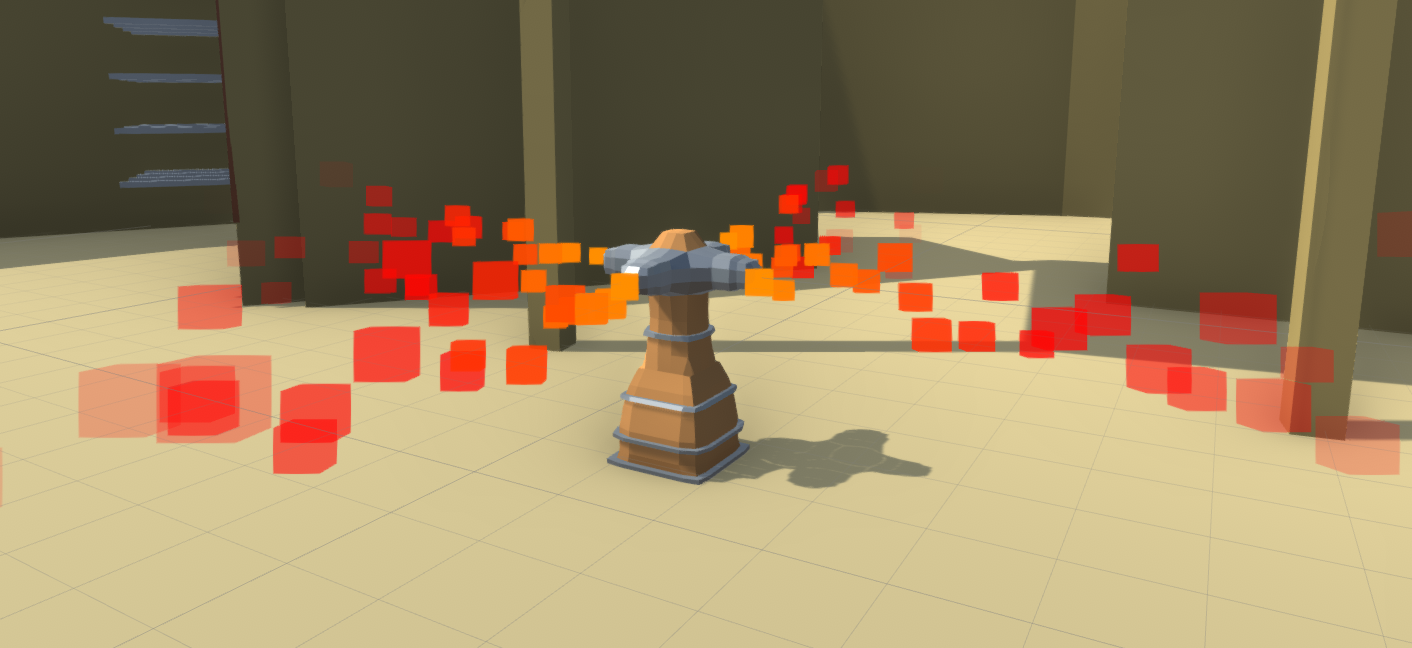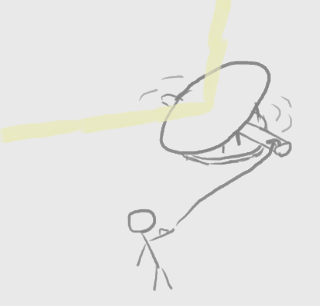What is this? Well Hook is the Hook, is the name of my final project for university. The team consists of me and another fellow game designer. At the moment, the project is halfway through development... well kinda. For uni, it's spread along the last two trimesters. Trimester one, is the development phase. Where we design, prototype and test the game to sort of flush out and get a greater understanding of what it is we're making. Then trimester two, is the production phase. This is where we start from scratch with what we now know, and well... create the game.
As of writing this first dev blog, I am in my first week of holidays, just finishing up on the development phase, and preparing for the production of the final game.
Okay... but what is the game? Our elevator pitch is this:
Hook is the Hook, is a sandbox arena brawler, where you use your grappling hook to take out enemies in stylish and unique ways for the audience.
Set in an alternate-history gladiator setting, you are thrown into various different arenas, with only your grappling hook (reasons why and story are still in the works). There will be waves of enemies and it's up to you to kill those enemies. You can grapple them, throw them into traps, throw objects like crates or rocks at them, etc. Yet your focus should be on the audience's excitement. You are there to impress a crowd. So when killing the enemies, you need to do so in both stylish and unique ways. If you grab an enemy mid air and throw them down into a spike pit, that's pretty cool. Yet if you keep doing the same thing with every enemy, then the crowd's gonna get kinda bored.
Before I go on, I need to explain that this blog is going to be mainly focused on what the game is. If you already know about the game, then this stuff isn't really going to be new.
The core mechanic of the game, or the hook, is the player's grappling hook. Like I mentioned above, they use this to defeat their enemies. Also, they can use it to move around and even do both at the same time if they want.
Although the GIFs to the left are quite old, they do represent the mechanic well.
Now let's look at some of the traps in the game. A few of them were implemented in the prototype, yet there are still quite a number that are in the design phase.
The fire trap. A four way flamethrower, which lights up both enemies and the player when they get in range.
On the left is a spinning blade. This will of course chop things that touch the blades. We're still deciding if we want to implement decapitation for enemies that get cut. On the right is the lion trap. If enemies get too close to the door, it will open up and a lion will pull them in. Not sure if we're going to have it so the lion can run around and cause chaos... but that would be cool.
These are two traps we're planning on adding in. Something we want to focus on with a number of traps, is player interaction. Have them control the function. On the left is a large spike wall that the player can pull down with their grappling hook, squashing any enemies under it. Then on the right is a large mirror that will focus the sun into a beam and burn any enemies that get in the 5m or so range. The player will be able to grapple onto it and rotate it around.
Okay, now enemies. At the moment we have four in mind. Each having their own approach to the player, means of attack and ideal ways the player can defeat them.
- Warrior: The most basic and common enemy found in the game. This is your average fighter with a sword, who will charge towards the player in an attempt to chop them up.
- Archer: A ranged enemy, who can shoot arrows at the player. They will try to maintain their distance.
- Heavy: The Warrior but with a shield. The player cannot grapple the shield and if they get too close, they will be barged and pushed backwards.
- Bomber: A ranged enemy who throws bombs. Right now in testing, this guy just seems to blow up all his friends when trying to get the player. So that will need to be tweaked.
So these enemies will be introduced over the course of the game, with each level having a unique combination of them. Oh that's right, I need to talk about the structure of levels.
At the moment, there are 10 levels. Each level has a unique set up of: platforms, traps, physics objects and enemies. New ones of each will be introduced and added in as the levels progress. For the player to pass a level, they need to meet the minimum audience excitement. I mentioned it briefly above, but you gain it by killing enemies in unique and stylish ways. If you do an interesting combo using multiple elements, that kill will reward you more audience excitement. Yet if you keep doing the same thing over and over again, you will only get around 20% of the original score. This is to deter a master strategy, and encourage exploration and experimentation.
Thanks for reading. Right now we're on holidays, so not much is going to be done. Yet when uni starts back up, I'll try and release one of these every week or so. Also, if you're interested in the development process, I've written a post mortem for the project so far.








